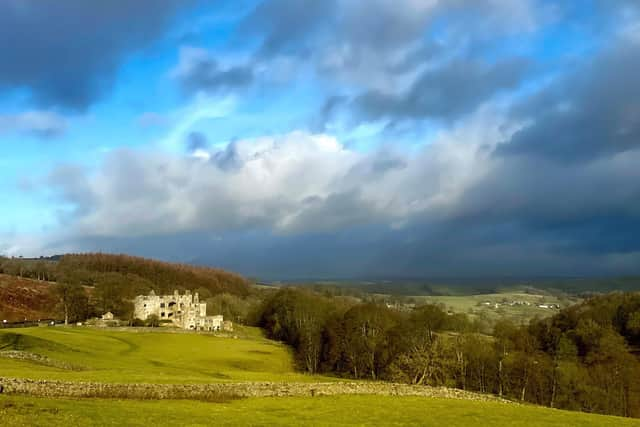Six of the best hidden historic sites in the Yorkshire Dales you may not know about with origins spanning hundreds of years
The Yorkshire Dales is an upland area of the Pennines and consists of river valleys and hills rising from the Vale of York westwards to the hills of the Pennine watershed.
Lead mining was customery in some areas of the Dales in the 19th century, especially between 1821 and 1861, and some industrial remains can still be found, including the Grassington miners’ cottages. Certain former mining sites are preserved by Historic England.
Advertisement
Hide AdAdvertisement
Hide AdThe Dales is home to some of the most fascinating historical sites including majestic castles, abbeys, priories, museums and gardens.


Six hidden historic sites in the Yorkshire Dales you may not know about
Barden Tower
A ruined building in the Parish of Barden, Barden Tower is located in Wharfedale and was originally used as a hunting lodge in the 15th and 16th centuries.
It was founded between 1485 and 1490 by Henry Clifford, 10th Baron Clifford, a nobleman, whose father died in the War of the Roses.
The tower was renovated and rebuilt by Lady Anne Clifford in the 1650s after its roof had been struck during the Civil War. However, it fell into disrepair in the 18th century and is now part of the Bolton Estate and is listed as a mediaeval fortified tower.
Marrick Priory
Advertisement
Hide AdAdvertisement
Hide AdDuring the 12th century, a group of Benedictine nuns picked this site due to its beauty and remoteness.
Over the next four centuries it was their residence until Henry VIII evicted them in 1540. Following years later, the Priory was used as a Parish church before falling into disrepair and became a home for stray chickens.
Artist JMW Turner visited the Priory in 1816 and made a sketch, from which was later produced as a watercolour.
Marrick Priory was once home to one of Britain’s oldest hearses, built in 1828.
Advertisement
Hide AdAdvertisement
Hide AdDuring the 1960s the Priory was converted into an outdoor education and residential centre by the Diocese.
Friary Gardens
The 15th century tower in the gardens is considered one of Richmond’s oldest monuments and is the focal point of the Friary Memorial Gardens. It holds a prominent position of great importance in the history and development of the town.
From the Market Place, Friar’s Wynd takes you on a journey through one of the two remaining mediaeval gateways, passing the Georgian Theatre to the Friary Gardens where the Franciscan Friary bell tower, built by the Greyfriars of Richmond, remains today.
Bargate
In the early 14th century, there was bad blood between England and Scotland and in 1307 Edward I attempted to seize the throne of Scotland but was unsuccessful.
Advertisement
Hide AdAdvertisement
Hide AdHowever, his son, Edward II, tried to take control of Scotland but was met with resistance by the Scottish ruler at the time Robert Bruce.
There is only one mediaeval gate that survived the conflict: Bargate on Cornforth Hill.
It was built to permit access for pedestrians and horses from the town to a settlement around a small green just outside Richmond’s south-west corner.
Bedale Hall & Museum
The history of Bedale Hall goes back to at least the 13th century; Brian Fitzalan is thought to have built a castle at this location.
Advertisement
Hide AdAdvertisement
Hide AdBrian died in 1306 and without a male heir to his estate, it was passed to his two daughters who shared it.
The estate was purchased in the 16th century by a gentleman of the court of Charles I, John Peirse, who is thought to have been the one who built the first Bedale Hall in the middle of the 17th century.
In around 1730, his descendant Henry began to transform the 17th century Hall into an opulent Palladian mansion after he was inspired by his travels.
Braithwaite Hall
This 17th century manor house is situated in Coverdale, west of the village East Witton and is a Grade II listed building owned by the National Trust.
It is a tenanted farmhouse and consists of a sitting room and carved staircase which are on show for visitors in June, July and August.
Comment Guidelines
National World encourages reader discussion on our stories. User feedback, insights and back-and-forth exchanges add a rich layer of context to reporting. Please review our Community Guidelines before commenting.
